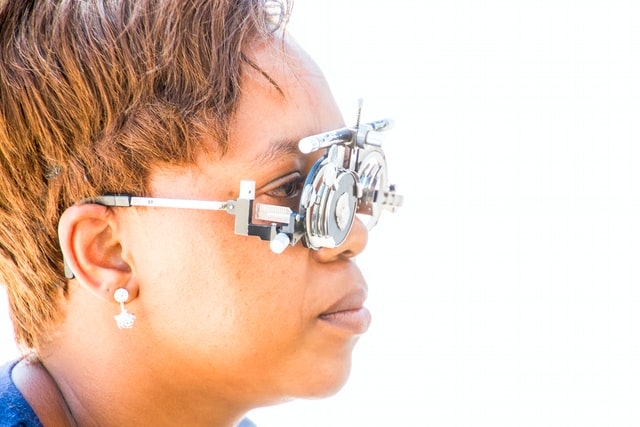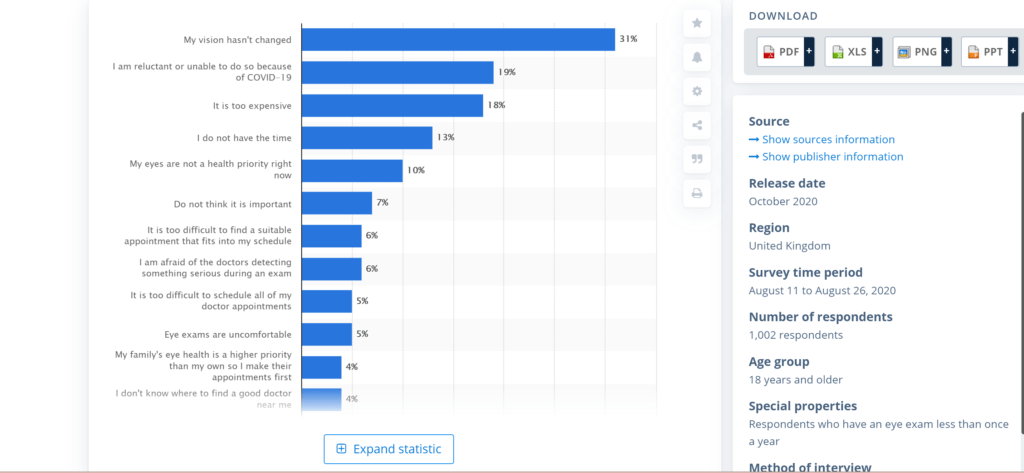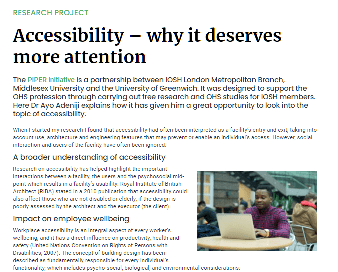You can call it what you like; you can diagnose it as whatever you want – but it’s a vast, unacknowledged problem that’s only getting worse.
Call it blurred or double vision – or call it by its medical name, AMBLYOPIA in children, and PRESBYOPIA in adults.
But it refers to the gradual loss of eye-muscle stamina to sustain “convergence and accommodation”, when focusing on the near indoors or close up on the screen. This could be in any indoor space, less than 20ft in size, with little natural daylight.
It could be at the office, or at home.
Reading and working in these conditions leave you with tired eyes, and generally fatigued as your eyes do their best to adapt.
The eye muscles become tired and then stop working as efficiently.
Some of us will experience stress-related vision suppression over time. Others will wake up one morning effectively monocular, living in a 2D world without depth. This is because the image from one eye has been ‘re-directed’ somewhere else, leaving the other eye dominant.
The visual system and brain process that dominant “single image”, ignoring the other fainter double image.
Then there’s Astigmatism, the suppression of the vision from one eye, with or without visible lazy eye.
Strabismus; misalignment of the eyes or unstable alignment of one eye
Asthenopia; weakness, or debility, of the eyes or vision
The list goes on and on, and you can find out more @ WHO ICD-10
Call them by their generic or medical names, but all are mirrored in Computer Vision Syndrome, more commonly known as Screen Fatigue, tired eyes and/or eyestrain.
Screen Fatigue/Computer Vision Syndrome is the name given to a cluster of symptoms that arise from looking at a digital screen for prolonged periods.
The symptoms can include eye strain, dry eyes, headaches, overall tiredness with reduced productivity, blurred vision, and often includes other musculoskeletal disorders, e.g. a sore, stiff neck, from being unable to sustain an ergonomically comfortable posture while struggling to see clearly
Screen fatigue is also cognitive fatigue.
The visual system has to work harder processing uncomfortable, distorted, blurred or double images, demanding more blood-oxygen as fuel to the brain to support the additional processing demand.
The more ‘close up’ work you perform, the more oxygen is required, the more fatigued you become, and round and round it goes.
It’s a thoroughly unpleasant merry go round.
28% of the population are immune from eyestrain or vision stress. Still, the rest of us, the 72% are not, and so easily succumb to visual repetitive stress fatigue and/or stress-related adaptations.
We are at a four to seven-fold increased risk of earlier onset of associated adaptations when over-exposed in early life or later to the near indoors and/or close-up at our school desks and on-screen.
China and now Instagram are seeking to introduce Exposure Control Measures, either by cutting off access to the internet after a period or having pop-ups advising “Take a Break”.
Instagram is bringing this in due to political pressure. China, for the simple fact that they are noticing 80% of students are graduating with severe myopia.
Linked to the ‘take a break’ concept is the well-known occupational health advice of the 20-20-20 rule for DSE operators (look away from your screen every 20 minutes, at something 20 feet away and for 20 seconds) when working with standard, unmitigated, inaccessible display screens that have not had their contrast optimised for the user in education or the workplace.
Computer Vision Syndrome is serious.
For example, in 2007, 58% of Display Screen Equipment users suffered from vision issues related to their screens.
What’s the number now, as 2021 draws to a close?
But more importantly, what can be done about it?
Sure, we put the smartphone down, look away, and take a coffee break. We all know about not being ‘online an hour before bed’, and many of us know about getting out and moving about in natural daylight – but how many of us actually do this?
But unless we adjust the screens we are looking at, we go straight back to the problem.
It then becomes a repetitive stress injury.
We need to adjust our screens because colour and light play a massive role in screen fatigue and cannot be left out of the conversation.
Researchers became aware of colours and sensitivity to light in the 1960s. As more and more has come become evident, we realise that every one of us experiences colour and light differently.
We use light; we don’t necessarily ‘see’ it. Instead, we interpret the waves of colours that surround us individually, as we interpret the speed at which they uniquely arrive in our visual system.
One person will see glare; another will not.
One person will find dark purple hurtful for their eyes; another will not.
Photosensitivity is an immune system reaction triggered by sunlight, which unsurprisingly
manifests in a high degree of visual discomfort and, for some, may trigger migraine, fits or convulsions, especially when presented with flickering lights/screens or strobe lights, or even sunlight flickering through trees beside the road, depending on the speed of travel.
Irlen Syndrome, first described by Helen Irlen, is a sensory disorder of how the brain interprets bright white light, whether reflected off white paper or from an illuminated background to text on-screen.
Visual Illusions are often created by playing with light and dark or shadows to challenge our visual perceptions and constructs of the brain’s typical or expected responses. Experience of typical images can also leave impressions on the retina interpreted as changing colours.
We all experience these differently, to one degree or another.
But Helen Irlen spotted a connection between visual stress and visual stress relief.
Through trial and error, she found that existing or early-onset eyestrain when reading could be relieved by selecting the best effective contrast other than a “high contrast white” background to text. The ‘normal’ white background with black text is painful for many.
Clashing contrasts of often unnatural (as in not found in nature) colours are uncomfortable and painful for many.
Hence her coloured overlays and coloured glasses for reading, aimed at reducing glare, and thereby reducing the discomfort experienced by the brain and visual system.
Other pioneers in colour therapy, including Arnold Wilkins, have sought similar methodologies for subjectively selecting the best contrast, thereby improving reading skills and abilities.
No one should experience vision stress, discomfort or painful headaches when reading.
But this is where ScreenRisk has joined the dots but flipped the script.
We don’t do the things we are supposed to do for our health, and in 2021 our lives are run through our screens, and those screens are damaging our eyes and causing us stress.
Understanding that many visual issues are replicated in screen fatigue and understanding that we are all unique in interpreting light and colour means we need an individualised response.
Knowing that stress affects the eyesight and all parts of our body and that digital screens that we are now addicted to cause cognitive fatigue – we created the DSO.
A tool that considers all of the above and chooses the best-coloured background objectively for your eyesight and visual system, providing you with that coloured theme for your screen.
Objectively choosing means your body, not your personal colour preference, selects the optimal colour that soothes your visual system. Reducing all of the above stresses also means that you are not repeatedly self-harming when working/studying online.
The induced near or close-up indoor eyestrain and 3D vision stress, created and exacerbated by hours on-screen, where no reasonable adjustments have been made, can be mitigated.
It’s simply a question of joining the dots as to what’s going on and then creating an app to make the eyes and visual system as comfortable as possible.
 Text
Text 







